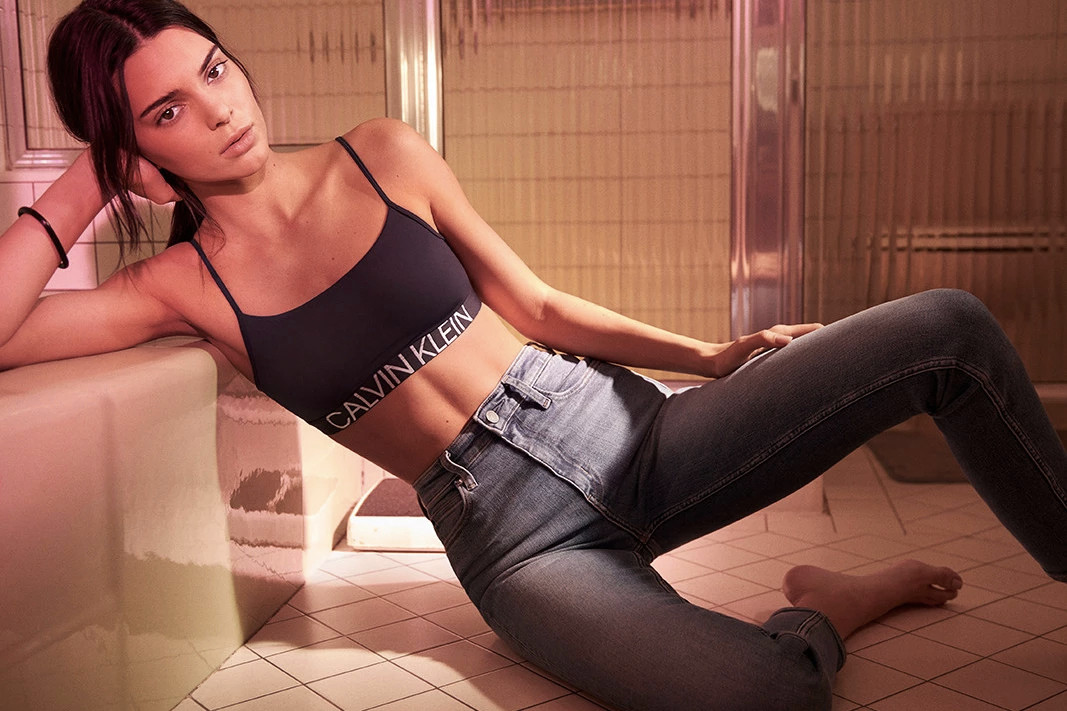A no-show in New York and a swift exit from Simons; fashion editor Meg Painter investigates what has happened to the legendary brand.
Calvin Klein Inc., established in 1968, has become a figurehead of American fashion in the last thirty years or so. But, in December, eight months short of his contract termination, Chief Creative Officer Raf Simons announced his departure from the brand after just two years. Two months later, in February, Calvin Klein’s noticeable absence from the New York Fashion Week schedule left us wondering just what was going on behind the scenes. And then, after the Fashion Week dust had settled, the announcement came that the brand would be closing its luxury collections business, including the 205W39NYC ready-to-wear line. Are we witnessing the fall from grace of one of America’s biggest clothing labels?
In its fifty-one-year history, Calvin Klein Inc. has grown from strength to strength. The brand’s first line was a ready-to-wear collection of understated coats and dresses, and September 1969 granted Calvin Klein its first Vogue cover. Following successful growth in the men’s underwear market throughout the 1980s, and provocative campaigns with Brooke Shields in the 1980s and Kate Moss in the 1990s, the brand propelled to the forefront of both the luxury denim and underwear markets, positioning Calvin Klein firmly as a consumer favourite. The annual Met Gala has also served as somewhat of a showcase of Klein’s creative work, with the fashion house a firm celebrity favourite, dressing the likes of Gwyneth Paltrow, Margot Robbie and Kendall Jenner.

At present, Jenner, the face of the brand since 2015, and other celebrity collaborators including Shawn Mendes and Millie Bobby-Brown are the driving force behind the brand, which has seemingly experienced a tectonic shift away from the luxury and into the mass consumer market, with 2016 sales generating $3.1 billion.
Simons’ arrival in 2016 was met with high expectations. Previously of Dior and Jil Sanders, the Belgian designer also launched his own menswear label in 1995 having developed a broad set of creative skills including furniture and interior design. His first collection debuted for A/W 17 and Simons was successful in making Calvin Klein one of NYFW’s most-anticipated shows. Under his creative vision, the luxury collection was rebranded as the 205W38NYC Collection, and a redesign of the flagship store followed suit.
Much of Simons’ work was celebrated amongst industry professionals, however, commercially speaking, it seems that the collections have failed to resonate with consumers. Designs often seemed safe and predictable with heavy usage of slogans and American symbolism taking centre stage. Some of the most prominent of these designs fell victim to high-street duping; for example, the S/S19 Jaws jumper was replicated by Zara at a more affordable price. Reportedly failing to deliver financially with its luxury lines, the brand further boxed itself into the safer underwear and denim markets, where profits continue to rise. The brand’s acceptance of this typecasting seems to distinctly differ from the company’s mission statement to “thrill and excite our audience using provocative designs and striking images.” Now we’re really confused.
Perhaps then, it is not Simons who has driven the multi-billion-dollar brand into rocky terrain; his work at Dior was very successful. Instead, could it be a clash of creative visions between Simons and PVH (the owners of Calvin Klein)? The brand seems confused and lacking in unity. L’Oreal marketing titan Marie Gulin-Merle, recently employed by Calvin Klein, has already made extensive changes to the marketing strategy following Simons’ resignation. Furthering the brand’s focus on mass sales of its underwear and denim products, Gulin-Merle has reportedly assigned the entire advertising budget to digital campaigns. Whilst Calvin Klein has had unparalled success with its digital #MyCalvins campaign, this is the first time the brand has focused entirely on its digital audience, abstaining from more traditional advertising and editorials, which suggests a shift towards the marketing of more affordable items to the masses. Calvin Klein products are stocked in UK high-street favourites such as Topshop and Urban Outfitters which increases consumer accessibility.
So, what next for the once-loved fashion house, whose beginnings in luxury fashion seem to have been left in its past? Whilst the house will continue to dress celebrities for red carpet events, no formal announcement has been made regarding Simons’ successor and the Milan headquarters are being significantly downsized, leaving the brand with a much smaller European hub. The move towards digital marketing strategies and celebrity partnerships suggests that young, socially conscious consumers are the new target market for a brand that has become inextricably linked with its underwear collections, rather than its artistic statements.
We’re excited to see what Simons does next, but the future at Calvin Klein seems currently predictable and entirely financially driven, a disappointing direction for a once iconic and exciting fashion label.
By Meg Painter.

